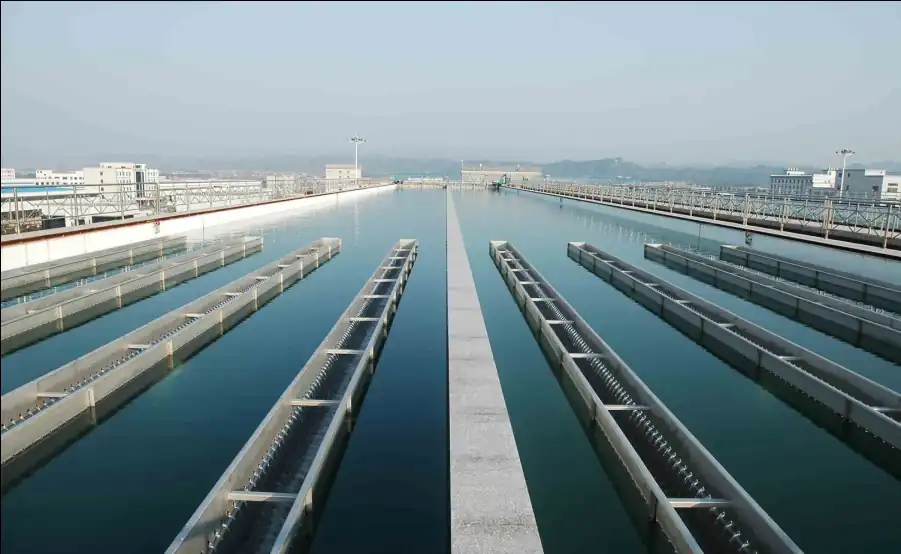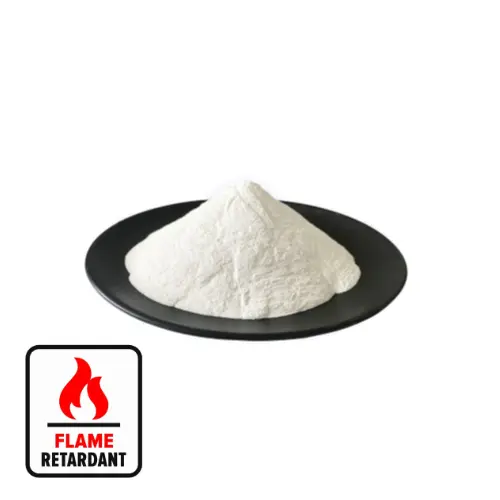Overview
Magnesium hydroxide is hexagonal crystal system or amorphous flaky crystals, it is a kind of inorganic weak alkali products, because of its strong buffer performance, high activity and adsorption capacity, handling and use of safety and non-corrosive, non-toxic, harmless, and so on a number of unique properties, so it is known as “green safety neutralizer”, “environmentally friendly flame retardant” and “the third alkali”, it is the implementation of the sustainable development strategy, environmental protection and beneficial ecological development process is highly favored and respected. Therefore, it is called “green and safe neutralizer”, “environmentally friendly flame retardant” and “the third alkali”, and is one of the favored and respected products in the process of implementing the sustainable development strategy, protecting the environment and benefiting the ecological development, and it has a wide range of applications in the fields of ceramic materials, environmental protection, medicine and so on. One of the large consumption, the use of the effect is significant in three major areas: First, as an inorganic additive non-toxic flame retardant, with flame retardant, smoke, drip, filler, and other properties; Second, in the environmental field can be used for wastewater treatment and desulfurization of flue gas; Third, the high purity of magnesium hydroxide is the production of high purity magnesium oxide is one of the most important raw materials.
Physical and chemical properties
Magnesium hydroxide is white solid powder, molecular formula: Mg(OH)2, relative molecular weight of 58.33, the Department of hexagonal crystal system or amorphous lamellar crystals, density 2.39g/cm3, refractive index of 1.561~1.581, Mohs hardness of 2~3, volume resistance 108~1010???cm, insoluble in water (18 ℃ when the solubility of 0.0009g/100mL), also insoluble in water. 100mL), also insoluble in aqueous sodium hydroxide solution with a concentration of 1mol/L, but soluble in strong acidic solution. Suspending 2g of magnesium hydroxide in 50mL of water, the pH of the system was 10.3.
Preparation method
1. Physical crushing method Physical crushing method refers to the direct crushing of the ore, after dry coarse grinding and wet ultra-fine grinding, to produce the required particle size grade of magnesium hydroxide products, the more commonly used ore for water magnesite.
2. Ore calcination hydration method The method will be calcined ore, the preparation of magnesium oxide hydration preparation of magnesium hydroxide, is the process of magnesium oxide dissolution and magnesium hydroxide precipitation, in which the dissolution of magnesium oxide is the control step. Due to the different composition of the ore, the more commonly used is magnesite.
3. Liquid phase precipitation method There are two sources of raw materials for this method, one is magnesite, dolomite, serpentine, etc. After acid dissolution or other methods of treatment, magnesium salts are obtained, and magnesium hydroxide is prepared by precipitation reaction with alkali. One kind is magnesium salt obtained from seawater, salt lake water and well brine to carry out precipitation reaction with alkali to prepare magnesium hydroxide. (1) Ammonia method This method takes brine or magnesium chloride as raw material. Ammonia is used as precipitant for the reaction, and the basic principle is as follows.
MgCl2+2NH3+2H2O→Mg(OH)2↓+NH4Cl Ammonia method Mg(OH)2 process flow diagram
(2) milk of lime method The method is obtained through different ways of milk of lime and magnesium salt precipitation reaction to prepare Mg (OH) 2 products, the process flow chart in Figure 4, the principle is as follows: MgCl2 + Ca (OH) → 2Mg (OH) 2↓ + CaCl2
(3) Sodium hydroxide method This method is the magnesium salt and sodium hydroxide for the reaction, the preparation of magnesium hydroxide, the preparation of the product of high purity, particle size uniformity, the shape of the rules, is causing widespread concern. However, because sodium hydroxide is a strong base, the reaction process is more rapid, a large number of new nuclei will make the generated magnesium hydroxide to form a colloidal precipitation, the product is often very small particle size, extremely difficult to settle and filter, but also easy to bring in more sodium ions and chloride ions, so the synthesis of this method requires more stringent conditions, to improve the synthesis of ambient conditions is one of the key technologies for the preparation of highly dispersible magnesium hydroxide powder. The reaction principle is as follows: MgCl2+2NaOH→Mg(OH)2↓+2NaCl
Uses
Magnesium hydroxide is both a product and a factory intermediate material. As an intermediate material, it can be used to produce magnesium oxide. Ultrafine grade magnesium hydroxide is also one of the important raw materials for the production of nano magnesium oxide; as a product, it has many aspects of use, of which the consumption is large, the use of the effect is significant mainly in two major areas. One is as an inorganic additive non-toxic flame retardant, with flame retardant, smoke, drip, filling and other properties;

The second is the application in the field of environmental protection. As an environmental protection product, it has occupied the first place of magnesium hydroxide consumption due to its excellent performance. Magnesium hydroxide adsorption, activity, especially slurry products, with non-precipitation, non-cohesion, better mobility, easy to pump and store, easy to use and regulate the control, etc., can be used for acid-containing wastewater neutralization, heavy metal removal, flue gas desulphurization, land acid rain treatment and pH value adjustment. The use of magnesium hydroxide can be specifically divided into the following categories:
1. in the application of flame retardant Currently the actual application of flame retardants are mainly halogenated, organophosphorus and inorganic antimony, aluminum, magnesium, boron, molybdenum and so on. Among them, halogen-based (mainly bromine-based) flame retardants is currently one of the world’s output of organic flame retardants. Synthetic materials using organic flame retardants emit toxic gases and smoke when burning, threatening the safety of human life and property. Moreover, the production process of organic flame retardants is difficult to control, the waste is easy to cause pollution to the environment, high production costs and high prices. Magnesium hydroxide is a non-halogen flame retardant, thermal decomposition of water, while absorbing heat, and decomposition of non-corrosive and harmful substances, not only to improve the decomposition temperature of the material added, but also does not cause pollution to the environment, can be widely used in polypropylene, PVC and unsaturated resins and other polymer materials such as flame retardant and smoke. The high thermal decomposition temperature of magnesium hydroxide is conducive to accelerate the extrusion speed, shorten the molding time, and also help to improve the flame retardant efficiency, which can be widely used in the fields of polyester, epoxy resins, paints, fiber products, polypropylene, polyacrylonitrile, polyester vinyl acetate, wires, cables, timber, rubber, paints, polyvinyl chloride, and so on.
2. Sulfur wastewater treatment Magnesium hydroxide is a weak alkali, slurry magnesium hydroxide has the advantages of non-precipitation and non-mobility, easy to use and adjust. Magnesium hydroxide’s weak alkalinity makes it has unique buffer and neutralization ability, in the process of using the highest pH value will not exceed 9, which happens to be the U.S. Environmental Protection Agency “Clean Water Regulations” (CleanWaterActs) in the allowable discharge of the highest limit of the pH system, and other alkali substances, if the excess will make the pH value of 12 Above. Magnesium hydroxide is slow to neutralize, the particles produced by neutralization settle quickly and are easy to filter, and its adsorption capacity is strong, active and low corrosive. These advantages make magnesium hydroxide in the treatment of acid-containing wastewater can reduce the operation process and time, reduce equipment investment. Therefore, magnesium hydroxide can be widely used in the treatment of acid wastewater.
3.Heavy metal remover Due to its large specific surface area and strong adsorption, magnesium hydroxide is easy to adsorb and remove heavy metal ions such as Ni2+, Cu2+, Cd2+, Mn2+, Zn2+, Cr6+ and other heavy metal ions which are harmful to the environment from different kinds of industrial waste liquids. Magnesium hydroxide can be used alone or in conjunction with lime and bentonite. As a heavy metal remover, a Japanese patent detailed overview of the use of magnesium hydroxide unique, and pointed out that compared with Ca (OH) 2 treatment, has unparalleled superiority.
4. Flue gas desulfurization using magnesium material desulfurization, first began in Japan, has become an international common concern and research issues. Atmospheric pollution mainly comes from the combustion of waste gas. Most of the exhaust gas, especially coal combustion produced by the exhaust gas contains a large amount of sulfur dioxide. Since the 1980s, magnesium hydroxide slurry products in the flue gas desulfurization came to the fore. This is because, compared with other methods, the use of magnesium hydroxide for desulfurization has the advantages of high efficiency, easy to operate, the process is relatively simple, by-products can be recycled and have a high economic efficiency.
5.Decolorization of printing and dyeing wastewater Printing and dyeing wastewater is a kind of industrial wastewater which is very harmful to the environment, its emission is large, the composition is complex, the chromaticity is deep, especially various kinds of water solubility, coloring power of the dyes, so that the traditional treatment method is difficult to be effective. In recent years, domestic and foreign research on the use of magnesium hydroxide treatment of printing and dyeing wastewater, the basic principle is the use of positively charged Mg (OH) 2 adsorption of negatively charged anionic dyestuffs and decolorization of dyestuff wastewater.
6.Wastewater phosphorus and ammonium removal Phosphate in wastewater will promote the growth of algae, resulting in fish hypoxia, ammonium will jeopardize the survival of marine life. Excessive discharge of phosphorus and ammonium has made the major lakes and oceans face serious eutrophication and red tide phenomenon. Therefore, the content of ammonium and phosphorus must be reduced before the discharge of wastewater. With magnesium compounds such as magnesium hydroxide, light burning magnesium oxide, dolomite ash (MgO CaO) dephosphorization and ammonium removal effect is remarkable.
7. Other seawater magnesia production process with the intermediate product of magnesium hydroxide as an adsorbent, can be removed in advance of seawater in about 80% of the boron, for the subsequent production of low-boron magnesia to lay an important foundation. In the chemical pulp bleaching, magnesium hydroxide can be used as alkali agent and cellulose protection agent, to keep the final whiteness of pulp unchanged in the case of reducing the COD content in the wastewater and can improve the viscosity of the pulp. Magnesium hydroxide can also be used as a fat and protein containing meat products, feed and feed additives preservative, can also be used in conjunction with antioxidants to prevent the biodegradation of meat tissue, and to maintain the elasticity and softness. As a potato preservative, under the condition of 4℃~6℃, a layer of 3% magnesium hydroxide emulsion coated on the surface of potato as a non-toxic protective layer can effectively prevent the disease caused by plant pathogens. In addition, magnesium hydroxide can be used as a matching component of new mud material in oil field, and it has some applications in pharmaceutical and cosmetic products, cigarette paper, anti-smoking coating and magnetic material processing.


